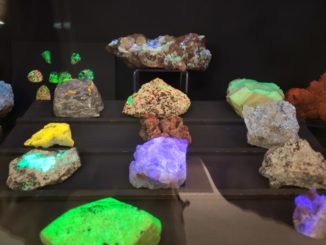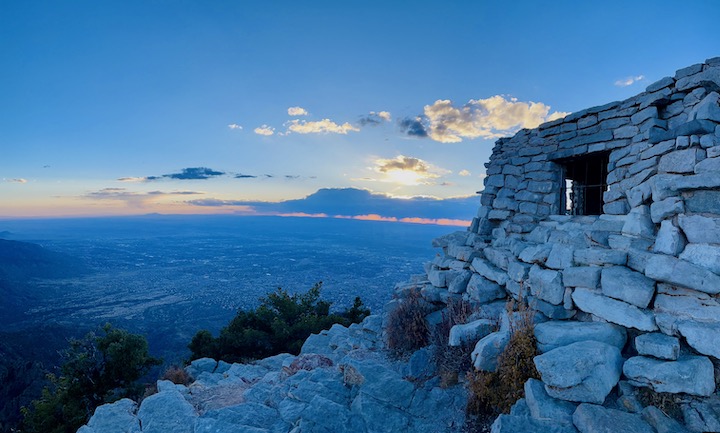
By Blake Downs, Editor-in-Chief
At forty-two hundred feet above the desert floor, you really can get a new point of view.
I’m on Sandia Crest, looking down westward to the city of Albuquerque and the setting sun as I talk to a friend about the small things in life–which in fact may be the big things. Up here, the world turns right-side up.
We had traveled to Albuquerque to get away from the hectic pace of life–as hectic as small-town life can be. We originally planned to enjoy a concert by my favorite band, but the day before, I read the email informing us that the concert was canceled, a little too late to change plans. This was a bit devastating, but we decided to make a trip of it anyway since I had the time off and couldn’t get a refund on the AirBnB. We definitely could use the time away.
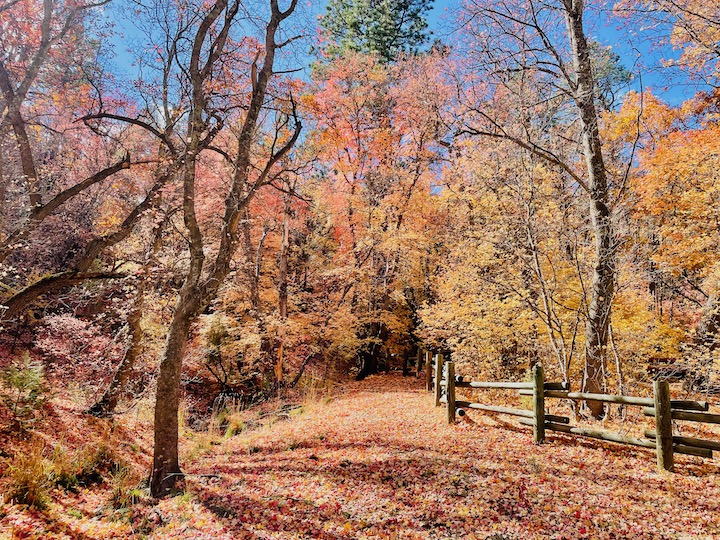
Early the following day, we flew across the flatlands of eastern New Mexico and, instead of turning north toward Santa Rosa, decided to go straight west at Fort Sumner to venture to a new place: passing a few salt lake beds and making a pit stop in the small dot-on-the-map, Estancia, we wandered our way up into the Manzano mountains, past the rolling and clustered houses that make up the villiage of Tajique to the crowded, but beautiful Fourth of July Canyon.
Here, New Mexico’s only natural grown maple grove clings to the eastern slopes of these mountains, and, now in October, the fiery red and orange foliage is a unique attraction in a spot not too far from the state’s biggest city. The vivid beauty was certainly something to behold, but with the crowds, we decided not to stay long, but to continue our journey.
Back on the other side of Tajique, we took NM-337 north up out of the Estancia Valley and further into the northern reaches of the Manzanos, winding through the Ponderosa-Piñon-Juniper mixture of trees that fill the air with a clean natural scent (one of my favorites). My buddy, a native of north Texas, stated, “Man, I’m trippin’. I never knew New Mexico was like this.” I was trippin’ too as this was the first time I had taken this road, though I was used to this kind of beauty.
“Yeah,” I quipped. “If you stay on the main highways, you’ll never see the nicer parts of New Mexico. You have to go looking for them.”
When we arrived on the outskirts of the bustling metro of Albuquerque, I groaned inwardly. This was not a top choice destination for me and the only reason I was going there was because of the now-canceled concert. We found a burger joint to catch a bite, took care of some shopping needs and headed to the AirBnB in the downtown district, with no real plan.
Once settled in, we decided to take the Sandia Peak Tramway up to the top, but as I purchased the tickets online, I secretly worried that this would be a wasted trip. After a stop at a local coffee shop with a unique atmospheric vibe, but super light-roasted coffee (a recent trend I still don’t understand), we headed back down Interstate 40, missed an exit or two, and slowly made our way through the craziness that is Albuquerque traffic to the foothills of the Sandias.
Once you’re on Tramway Boulevard, you really start to appreciate the majesty of the mountains. The high-rising prominence of the near-vertical cliffs to the east really takes you aback and it’s hard not to get caught up studying the lines of the ravines and rocks (that is, if you’re not driving).
We pulled in, found a parking spot, and made our way in a round-about fashion to the boarding station. The gentleman who let us through to climb the stairs to the next tram said, “They’re going to yell at me, but I’ll let you through.” Great. That was a little disconcerting. We’ll be the one load too heavy.
Once they let us through and pinned us in, the worker behind us said, “Welcome to the Sandia Peak Tramway. The most important thing to remember on your trip is–”
And then she shut and locked the door, leaving us stuck in a crowded box that was about to climb four-thousand feet in 15 minutes.
There’s something about floating above the ground, already starting at 30 feet or so above the parking lot and moving slowly up. When you go over the support towers, you rock, and the world around and below you moves around a bit. At one point, there is nothing below you but enough space for the Eiffel Tower to fit between you and the cragged rocky bottom that makes up the cliff sides of the mountain. Up here, you quietly get right with God one last time just to make sure. It’s awesome in the literal, traditional sense of the word: You are at a loss for words at the visuals around you, thinking of the heights and feats the engineers had to crest to put this together, while at the same time nervously laughing and hoping this thing does what those engineers created it to do–at least just long enough for you to get off it and step back on solid rock.
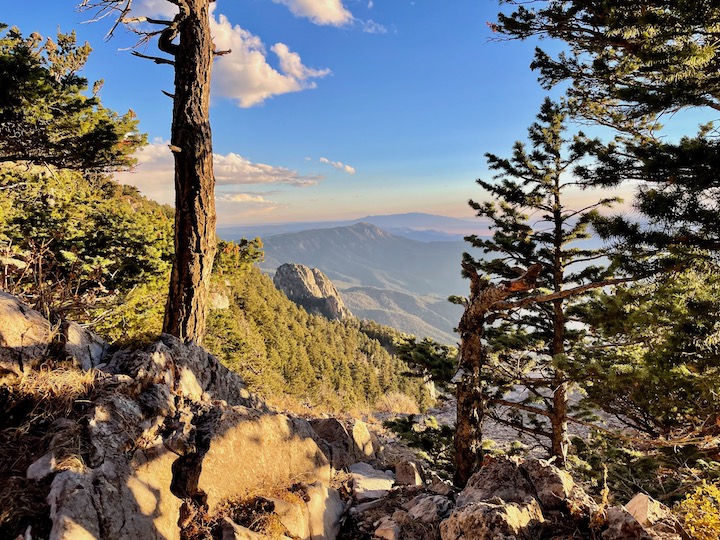
We docked at the top and, after adjusting to the colder temperature by donning our hoodies, decided to take the trail north along the crest through the tall fir and spruce trees as far as we could before the sun went down, stopping every once in a while to take in the view of the Rio Grande Rift valley.
Eventually, we made our way to what is labeled on the map as the “Kiwanis Cabin,” a bare, open-windowed limestone structure on the edge of the crest, but what feels like on the edge of everything. Here, we take a break and watch the sun go down. There are people conversing right below the cabin, but the openness makes them seem so far away. Up here, you feel a thousand miles away from everything–anything, really.
We talk about nothing in particular, just maybe the small struggles in our lives, our friends, our families, the letdowns we continually face. But you really don’t need to talk much up here. Just enjoying the ever-growing bluer night sky is enough to heal the soul and shed the stress of everyday life. We don’t say it because we’re MEN™, but there really is something cathartic about being above it all, outside of the gravity of the harshness of everyday wear and tear and the little things that slowly build up over time.
But it’s understood. And as we make our way back to the tram dock in the growing dark, we feel a little lighter. Something is resolved: No matter what, I can face this life. The God of my childhood faith is enough. He’s been faithful up to this point and he will continue to be.
We load the next tram in the dark and watch the lights of Albuquerque grow closer and closer, pulling us back in. But we’re lighter now, freer.
Our cares are up on the mountain, left in a crude stone cabin.
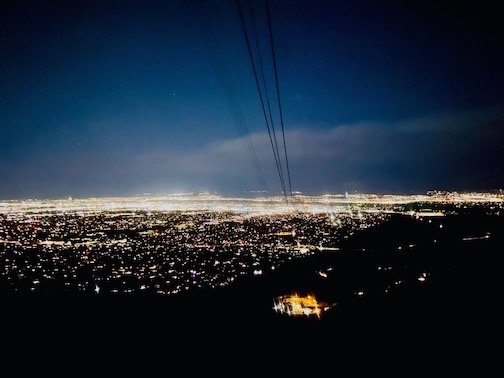
All photographs by Blake Downs.


